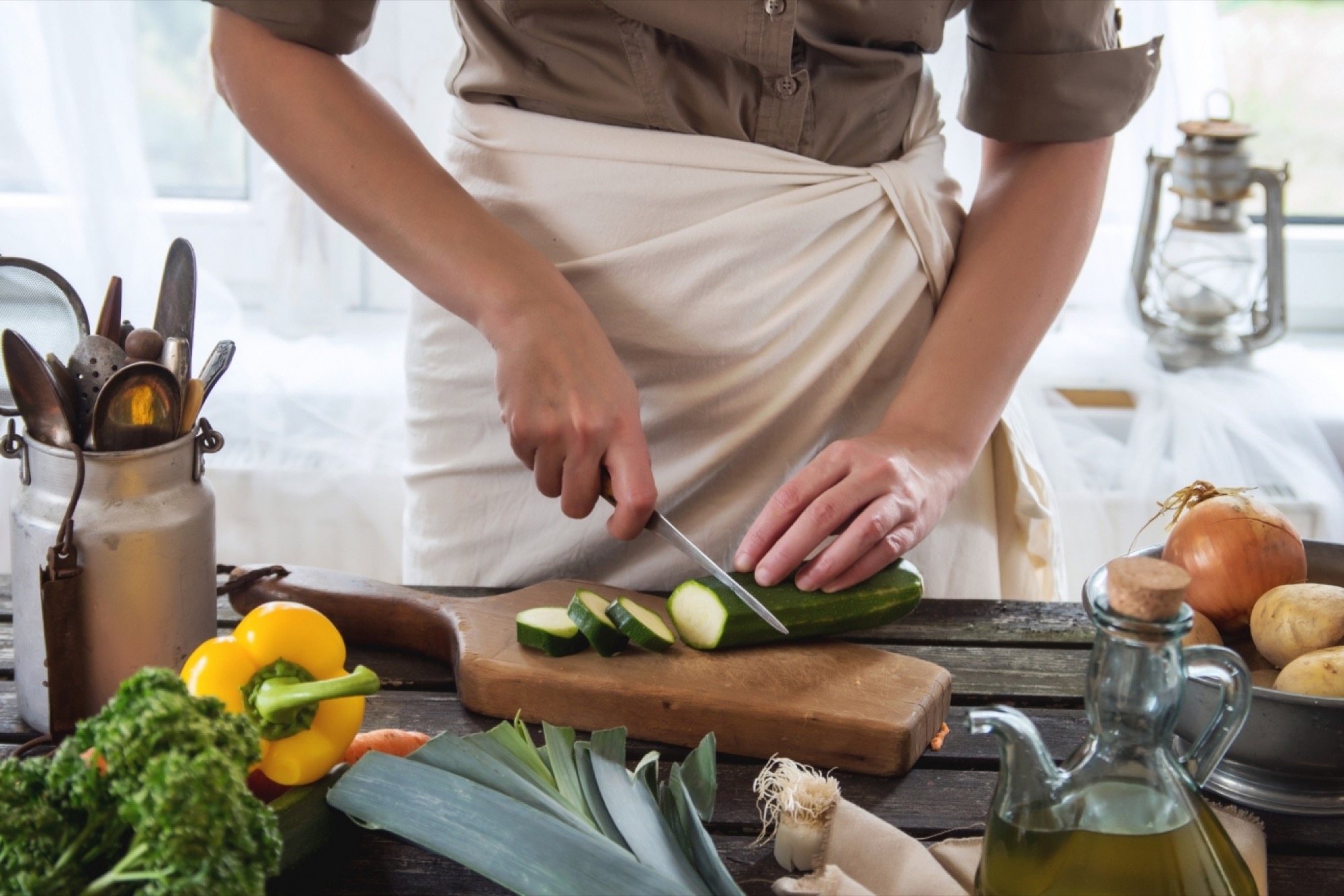Add 3D Effect to Your Food With This Simple Tip by Chef Gautam Chaudhry In a candid conversation with Restaurant India, Chef Gautam Chaudhry talks about the concept of plating and the basic elements that restaurants should focus
You're reading Entrepreneur India, an international franchise of Entrepreneur Media.

Chef Gautam Chaudhry owns a catering company Gourmet Aura and a chain of restaurants under the Demiurgic Hospitality. He is the operating partner at GC Food World Pvt. Ltd. The company provides complete food solutions for Food and Beverages business. Chef Gautam also represents the exclusive group of creative chefs who pioneered the trend of Progressive Indian Cuisine. He had also conceptualized Tanzore Restaurant & Lounge, Beverly Hills, USA, which was recommended by the Michelin Guide.
He has also conceptualized the award-winning restaurant The Pink Poppadom in Bengaluru. He is also the operating partner in 38 Barracks, an army-themed restaurant in Connaught Place, Delhi.
In a candid conversation with Restaurant India, Chef Gautam Chaudhry talks about the concept of plating and the basic elements that restaurants should focus.
One moment that brought You into Food
I was very young and I used to eat these white or Pindi Chanas. My mother would cook it for everyone in the house. The fragrance of which used to travel in the neighbourhood and people would flog up to eat. It was a culture of Sanjha Chulha. It was those things that got into my head then. I had always wanted to cook those pindi chanas. While I was pursuing my Maths (Hons), I got an opportunity to do the hotel management and, here I am.
"When I was 29-year-old, I conceptualized and started a restaurant at Beverly Hills. The Michelin Guide recommended my restaurant and the concept. That's one of the great food memories I have."
Key To Menu Designing
It is nothing which is perfect. In ideal circumstances, we keep certain parameters in mind. So to start with –
(1) There should be a texture. If there is something soft in the direction of the preparation then you need to have a food accompaniment which has a crisp element.
(2) If you have something which is dull in colour, you need to have a food accompaniment which is bright in colour; the contrast should be there in the food served.
(3) While plating, take care of the negative spaces.
These factors need to be kept on mind while plating and designing the food menu.
Must Read: Restaurants Must Have Proper Structure And Design, Else They Will Collapse
A Tip to Convert a Simple Food Look Like a Luxury
Before answering that question I would say all the chefs need to understand the concept of plating.
It is very easy to make any food look good. As a chef, you should use those elements which go along with that particular preparation. Do not add anything just for colour.
While plating, there are certain factors you should keep in mind - negative spaces, colour contrast, texture and height.
If you want anything look beautiful, give it a height. For example, if you're having something as basic as a biryani, I advise to take the rice in a mould, put it on the plate and place the lamb shank above, add a few salads over it. This will add height and visually give a 3D effect to the food.
"A 3D image certainly looks beautiful rather than a flat surface."
Pro-Dynamic Approach With Food
There is something which is called pro-dynamic approach. Nowadays, we have been picking up things just to beautify the plate, and to make them Instagram-friendly. We use certain products which travel a very long distance increasing carbon footprints and then we utilize it. We do not think about sustainability. Not even about the local farmers' produce; we outsource it. We fancy about asparagus and olives.
Also Read: Why Local Produce Is Becoming Game Changer In Supply Chain Biz
There are so many Indian local ingredients which we do not use. I think, in India or probably across the globe rather the pro-dynamic approach is going to settle now.
The pro-dynamic approach is - there is seasonal and local produce. There are certain areas which produce mangoes in January because the temperature in those areas is warm, and the mangoes only ripe and sweeten in summers. So, you should have mangoes from those areas.
I think winter is a wonderful season for certain vegetables like squash, water chestnuts and cauliflower which you do not see around the year. Over a period of time cauliflower has become neutral; if eaten raw and fresh, right at the farm itself, you will forget the taste of chicken and mutton.
You should have them only in winters because it is only during that time you get it fresh. You should not have cold storage or certain additives which are being used to preserve the vegetables. It is not good.
If you talk about the food trend that will take shape in 2019, I would say that people are getting health-conscious.
New Ingredient/s You Have Recently Added to Your Cuisines
Onions and fried onions, they are not new though. Another is Sorrel, also known as khatti patti in Hyderabad. Then there is Gongura flower; its flavour is outstanding. While travelling abroad, a person served me a tea saying "it's an ancient herb and you must try". And as I tasted it, I certainly reconnected with the flavour. I knew it was sorrel and I was right.
I, recently, introduced a cold beverage at our catering company Gourmet Aura. The beverage is naturally sour, you just need to add a bit of flavour.
This article was originally published by Sara Khan.











